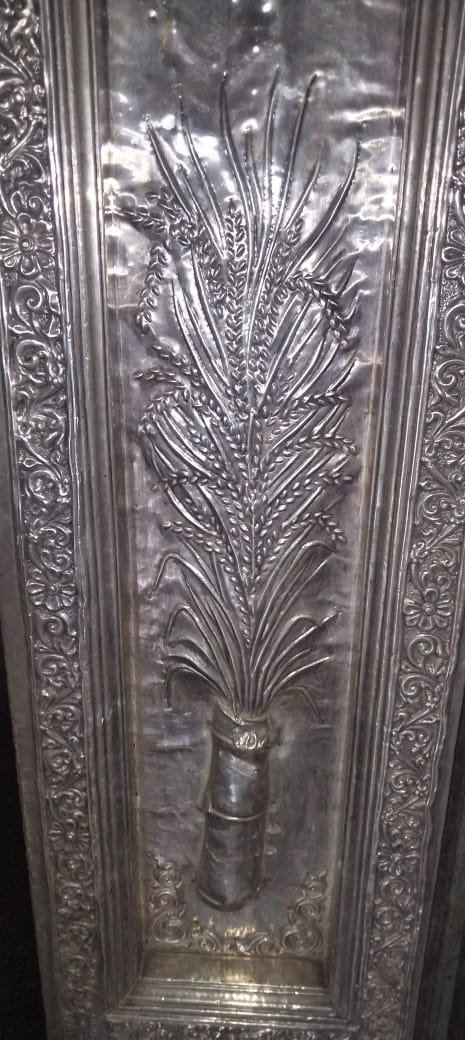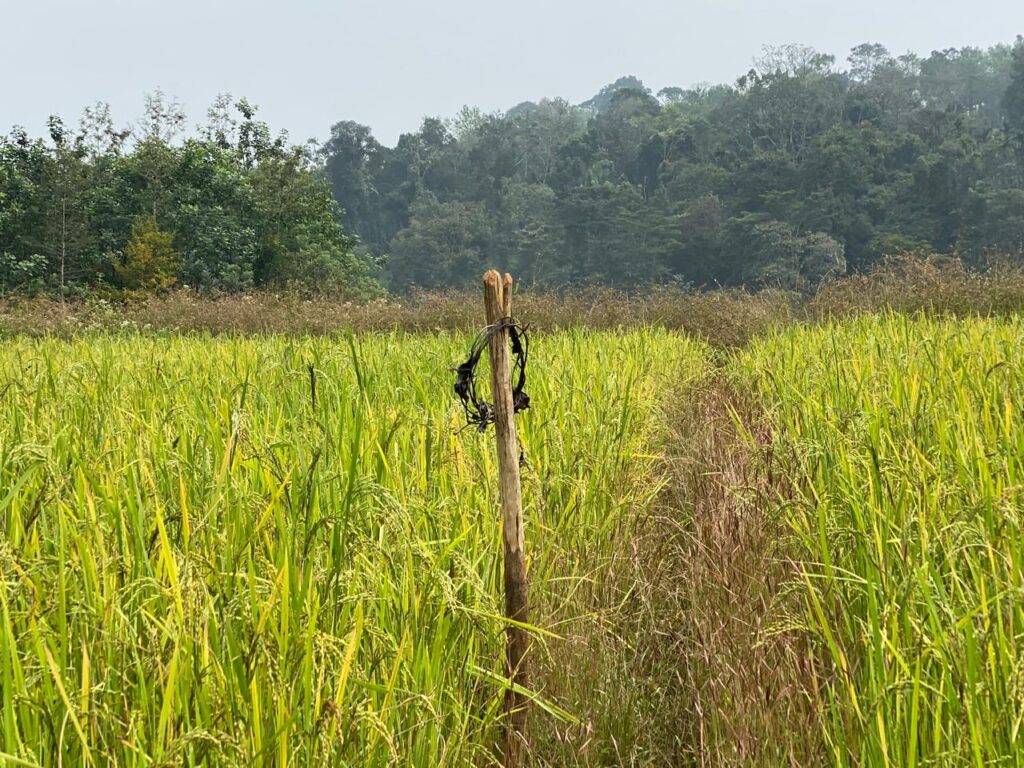THE SIGNIFICANCE OF PADDY CULTIVATION IN KODAVA CULTURE
By Paradanda Subramani Kaveriappa
It was gratiating to witness nearly 38 acres of precious fallow wetlands being brought to life with paddy saplings being transplanted in Bollarimaad village.
The germination of this idea is to the credit of Connecting Kodavas and collectively executed by joining hands with Jabhoomi. Both these committed organisations have held major programmes previously in bringing like-minded Kodavas, especially youngsters under the aegis of Bengaluru & Mysuru Kodava Samaja Youth Councils’ and other Kodava Institutions in conducting ‘Naati Pani’ and ‘Bael Pani‘.
Paddy/Rice cultivation took pride of place and is an irreplaceable crop in the rich tradition and culture of Kodavas; it was central to the agrarian values and the spirit of kootupani in the development of our community spirit and way of life. It contributed to the unity and harmony of our social structure in multifaceted ways.

Let me attempt to share some further sacred aspects of paddy/rice well beyond it being a primary food crop and of course one of the important places of worship for Kodavas – Lord Igguthappa Temple. As is well known – Iggu translates to Rice and Thappa is Giver. Look at the silver doors at the temple – you will find a Kuthi full of harvested kadd (a special container to carry harvested sheafs of paddy) as the most important offering to the deity!

Similarly, the custom of placing Bothh in our paddy fields at the time of Cauvery Changrandhi is a mark of respect to Goddess Cauvery (Kaveri) that her land has been tilled and paddy sown for her blessings for a bountiful crop. It is our belief that we Kodavas are mere custodians of the land during our lifetime. This was also the basis on which Jamma lands were given to Kodavas and others – of course by the Rulers in later years with no tax being levied in appreciation for services rendered to the State. This has since become a very complex matter and best set aside in the context of this article.
From time immemorial in Kodava Ainmanes, all auspicious occasions like “marriage” would begin with the Pattedara or “nominated elder” of the family praying before the Nellakki bolcha and showering a handful of rice three times towards the lamp at the end of the prayer to seek blessings of ancestors as a mark of respect and to commence the function at the Okka’s Ainemane.

Subsequently at the dampathi muhurtham the bride and groom are blessed by elders and other guests by showering a handful of rice over their head. This rice is considered a symbol of good health and prosperity.
Similarly, even while performing the last rites of a Kodava, the “aruva” (supporting family) family women continuously offer handfuls of “Sameya” from a basket – typically a mixture of roasted paddy, mustard and turmeric powder from the deceased’s household is gently sprinkled on the final journey to the “kekola” or graveyard. This act symbolises that “no further exigency should fall upon the family of the departed soul”. The kekola is also considered sacred as a gesture of obeisance to our ancestors.
The next day post funeral, the Aruva along with the family clears the ashes and douses the ashes with water, placing three stones representing kaala, guliga and kuliya. These stones which were wound around with three colours of threads namely black, white and red and placed at the site. A symbolic white cloth is placed on the stones on which a glass of milk is poured. Here again a handful of paddy and mustard is sowed around the 3 stones after being fully soaked with water. This symbolizes the closure of all rituals and the Aruva prays for the departed soul to seek moksha. When the grains sprout, it is an indication of the soul finding peace.
To summarize, paddy has immense value and is well entrenched into many customs in Kodava culture from birth till we depart.Above all, the most important aspect to note is the extreme hard work and challenges that several generations of ancestors must have endured to create wetlands to grow rice in a fairly hostile environment. It would be sacrilegious not to respect the land that we’ve inherited by not cultivating the same. It is a remarkable fact that it requires 4096 individuals, in only ten generations, for an individual to be born and inherit this precious land and to become a part of an Okka. This is a remarkable accident of birth that needs to be noted, cherished and lived well.



The cultural parallels between Kerala and Tulunad are undeniable. After all, as the saying goes, Lord Igguthappa and his brothers migrated from Kerala to Kodagu, bringing with them a rich heritage that’s still palpable today. The numerous Bhagwathi temples scattered across Kodagu are a testament to this shared history. What’s truly remarkable, however, is the Kodavas’ ability to preserve the essence of their culture, centered around their Aine Manes and Kaimadas. Their unique ancestral worship, where Guru Karonas are revered above all else – even the gods themselves – is a tradition worth cherishing.
As a son-in-law of the land and frequent visitor to Kodagu, I’m thrilled to see the initial efforts to revive large-scale paddy cultivation taking shape. I sincerely hope this initiative gains momentum across all rice-growing areas, particularly as a monsoon crop. It’s crucial for maintaining the water table and preserving the region’s precious, unique rice varieties. By doing so, we can ensure the long-term sustainability of Kodagu’s agricultural heritage. Keep us inspired and reminded of our culture and heritage, by such articles.
This article is a must read for every kodava simply because it not just encompasses paddy cultivation and it’s intrinsic activities but also elucidate the traditional customs associated with paddy which many of us aren’t aware. Thanks to author for enlightening